A content management system (CMS) is an application allowing users to become authors of their own content. An administrator of a CMS site has the ability to add new pages, text, files, and completely own the structure and content of their website without any backend access or development knowledge. CMS sites can be efficiently hosted and maintained on various services provided by AWS. Many of these services improve the SDLC of the application by securely storing application code, enabling frequent releases, providing highly available custom content, and the ability to replicate environments using Infrastructure as Code.
AWS CodePipeline
AWS provides CI/CD tools that work seamlessly with CMS applications. It’s important for any application to have a well-defined release process and AWS CodePipeline streamlines the build and deploy steps. AWS CodePipeline can use AWS CodeCommit, GitHub, or Amazon S3 as sources. Many open source CMS solutions have their source checked into GitHub which makes tying these projects to AWS CodePipeline incredibly simple.
Developers can connect to GitHub or AWS CodeCommit through the AWS console under the AWS CodePipeline service where they can select their source repository. They can then add build, deploy, custom, and manual approval actions as needed. Once in place, when a change is made to a source repository a pipeline can automatically trigger and all defined steps in the pipeline will be executed.
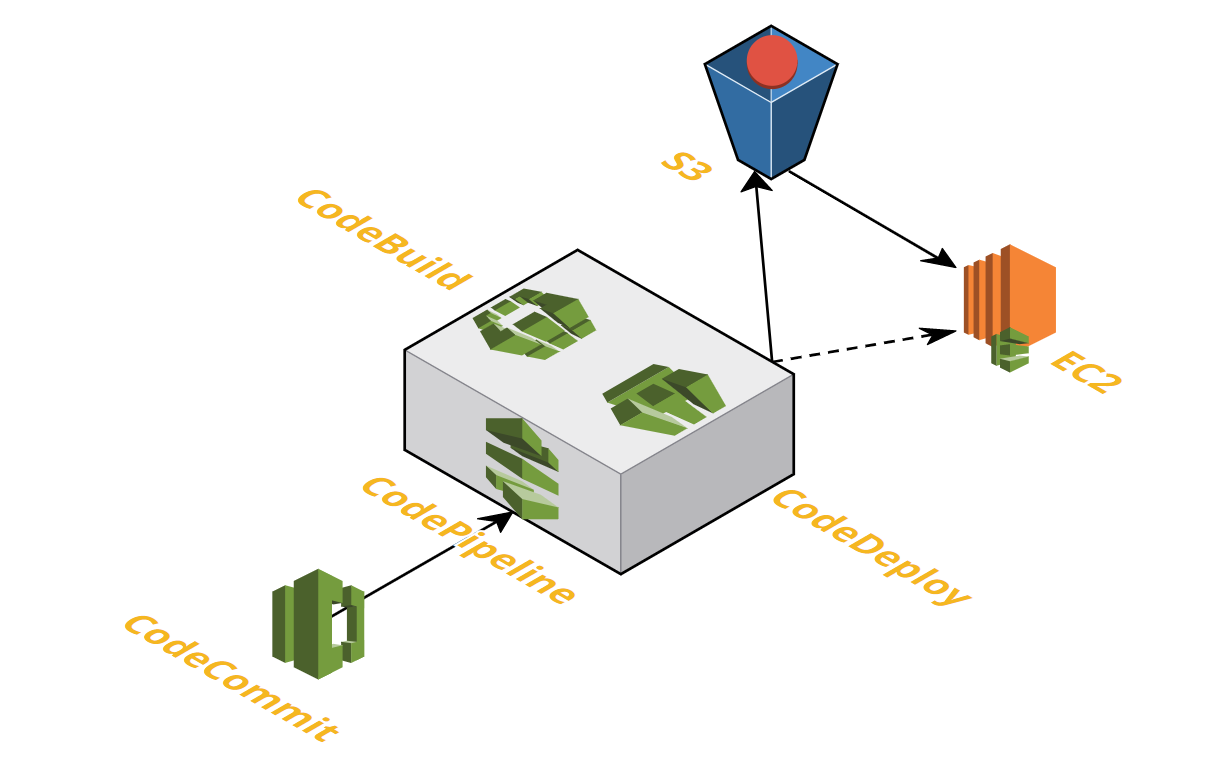
Environment automation with AWS CloudFormation and AWS Elastic Beanstalk
AWS provides two services to quickly spin up new environments and projects with the click of a button: AWS CloudFormation and AWS Elastic Beanstalk. Both can be used to create environments for CMS sites providing different levels of automation and environmental control. Often a new environment will need to be spun up quickly to provide a new testing or QA site. In other scenarios, a brand-new application may need to be created, but that application’s functionality overlaps with previously created CMS sites and just needs to be customized for a client. AWS CloudFormation allows a developer to create templates that describe in yaml or json code the environment’s specific resources such as Amazon EC2 servers, Amazon S3 buckets, or Security Groups. These templates only need to be created once and can then be reused or modified to quickly create new environments. AWS CloudFormation allows complete control over the environment’s resources whereas AWS Elastic Beanstalk manages more of the environment.
AWS Elastic Beanstalk requires just a few pieces of information about the type of application being created, and then automatically creates all necessary resources for the environment. There is less control over the resources created by an AWS Elastic Beanstalk application, but the speed in creating an entire application stack means less time developers need to spend provisioning and configuring resources by hand. Both environment creation methods decrease the potential for human error caused by a manual process.
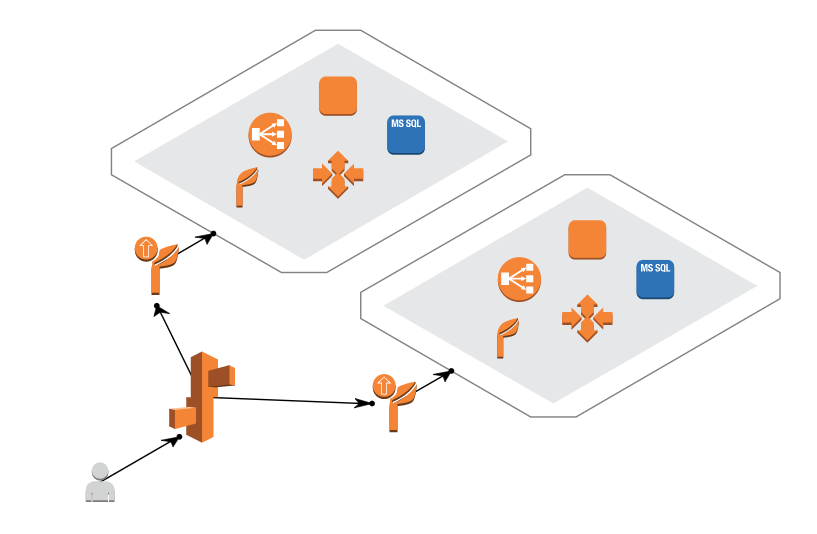
Amazon EBS, Amazon EFS, Amazon S3, and Amazon FSx for Decoupled Site Asset Storage
CMS applications often allow users to upload custom files such as media or CSS. By default, most CMS frameworks store these files to local disc. AWS provides many storage options, each with benefits and drawbacks, to store these assets: Amazon EBS, Amazon EFS, Amazon S3, and Amazon FSx.
Amazon EBS (Elastic Block Store) has two main disk type options: SSD and HDD. An SSD disk type will provide faster performance than an HDD. Amazon EBS volumes can be attached to both Linux and Windows servers and it is typically the most performant solution. However, Amazon EBS volumes can only be attached to one EC2 instance at a time, meaning it will not be usable for shared storage in auto-scaling scenarios. If a CMS site will get a lot of traffic and needs to scale to maintain site performance, Amazon EBS would not be a good choice to store dynamic content. Amazon EBS provides a snapshot method of backing up content and restoring to new Amazon EC2 instances.

Amazon EFS (Elastic File System) is similar to Amazon EBS but has the ability to be accessed by multiple Amazon EC2 instances. It is therefore useful when auto-scaling is needed for a heavily trafficked application. However, Amazon EFS cannot be mounted to Windows instances.
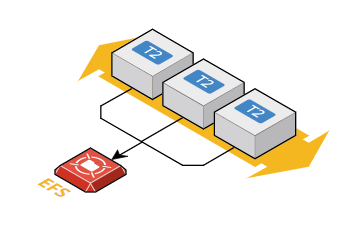
If auto-scaling is needed in a Windows environment, Amazon S3 (Simple Storage Solution) and Amazon FSx are viable options. Amazon S3 differs in that it stores files as objects in buckets via an API instead of leveraging a file system mount. Replication can also be configured on a bucket to copy an item from one bucket to another, providing a method of backups or syncing site assets across environments. In general, Amazon S3 will be the cheapest option compared to the alternatives. The biggest decision factor is Amazon S3 likely requires significant application changes to leverage since it can’t be mounted.
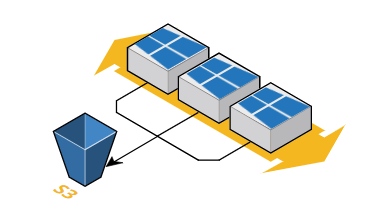
Amazon FSx for Windows File Server works similarly to Amazon EFS but for Windows Servers. It provides a managed storage solution that can be attached to multiple instances and also provides some additional functionality like Active Directory integration.
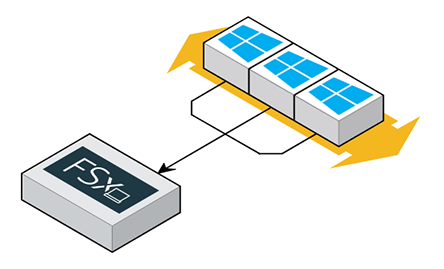
Conclusion
The services mentioned above work together to provide a stable and efficient environment that accommodates a CMS application. AWS CodePipeline can manage the release process and is already integrated with popular version control providers like GitHub. CMS applications can utilize AWS CloudFormation and AWS Elastic Beanstalk which enable new environments to be built and created quickly. AWS provides flexibility when choosing the appropriate storage platform. Amazon EFS, Amazon EBS, Amazon S3, and Amazon FSx cover most storage scenarios when running a CMS.
Do you still have questions about custom development or CMS?
Feel free to contact us, we’d love the opportunity to further discuss anything you have read.


